The art of captivating communication goes far beyond mere words. It’s about creating connections that resonate deeply with others. In a world inundated with information, the ability to intrigue and inspire has become a rare and valuable skill.
Today’s guest, Sam Horn, is a master at helping people tap into their inner wisdom and communicate it effectively. As the CEO of the intrigue agency, Sam has given three TEDx Talks and authored ten books, including the popular titles POP! and Tongue Fu!. Her work has been featured in the New York Times and on NPR, and she has presented to major corporations like Intel, Accenture, and NASA.
In this enlightening conversation, Sam shares her insights on capturing attention, crafting compelling messages, and connecting with others in meaningful ways. We explore the power of asking questions instead of explaining the importance of linking the unfamiliar to the familiar and how to turn INFObesity into intrigue. Our discussion also touches on the role of intuition in decision-making and how to stay open to serendipitous opportunities.
Whether you’re an entrepreneur, author, or simply looking to communicate more effectively, this episode offers valuable strategies for capturing attention and creating meaningful connections in both personal and professional settings. So without any further ado, on with the show.
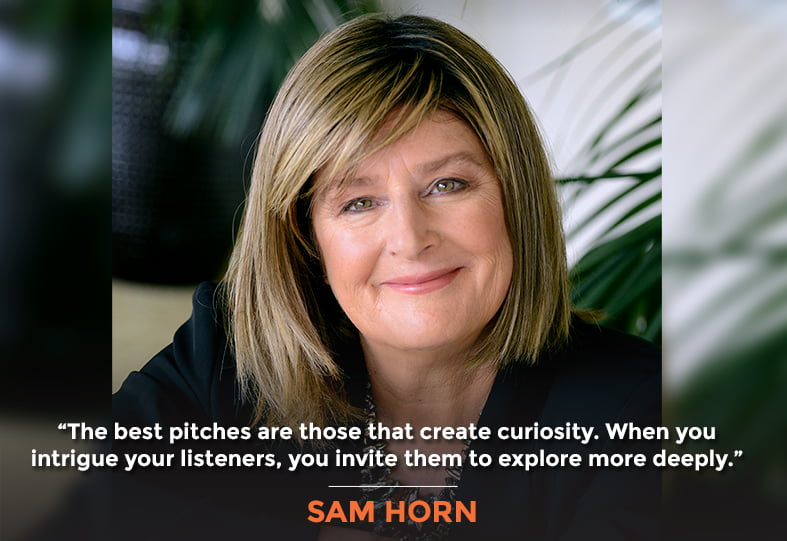
In This Episode
- [02:22] Stephan welcomes Sam Horn and requests to understand Sam’s motivation for helping writers.
- [06:04] Sam directs listeners on how to effectively get a yes to your book, idea, startup, product, or program.
- [12:18] Sam highlights her process or framework for improving systems, communication style, and messaging.
- [16:38] Sam presents successful pitch examples and demonstrates how to craft unforgettable messaging, stressing the use of alliteration, iambic meter, and rhyme.
- [25:44] Stephan and Sam explore strategies for leveraging AI content, such as tools for generating initial drafts.
- [37:37] Stephan and Sam reflect on trusting intuitive feelings and introduce the idea of “serendestiny.”
- [51:34] Stephan and Sam share thoughts on connections that transcend physical time and recount some of their magical experiences.
Thank you for coming, Sam.
Oh, you bet. I can’t wait to talk, story and share some best practices with your audience.
Awesome. First of all, I would love to understand more about your motivation for helping writers. You have a storied history of the Maui Writers Conference, and I think it was 17 years ago that you did that. You’ve been so instrumentally helpful to so many writers over the years. You’ve helped them become best-selling authors and get big speaking gigs, huge deals, etc. So what motivates you to do that, and what got you started?
I am a woman on a mission to get people’s eyebrows up for what we care about. So they care about it, too.
I will always remember the very first year of our Maui Writers Conference. What can we do for the film industry? We were to the publishing industry. We gave people from around the world an opportunity to jump the chain of command and pitch directly to decision-makers. I mean, you could pitch your screenplay to Ron Howard. Where do you get a chance to do that?
Here’s what happened: in the first year, she came out of her pitch session with tears in her eyes. And I went over, I said, “Are you okay?” And she said “I’m not okay. I just saw my dream go down the drain.” And I said, “What happened?” She said “I put my 300-page manuscript on the table.” The editor took one look at it and said, “I don’t have time to read that. Tell me in 60 seconds what it’s about and why someone would want to read it.” I talked to Bob Loomis later that night. I said, “Bob, what’s going on?” He said, “Sam, we’ve seen thousands of proposals. We make up our mind in the first 60 seconds whether something is commercially viable.”
The next day, I stood in the back of those pitches, and I could predict who was getting a deal without hearing a word being said based on one thing. Guess what? The decision maker’s eyebrows. Because, see, if we’re describing our startup or our marketing campaign or our business to someone and their eyebrows are crunched up, it means they’re confused. Confused people don’t say yes. If their eyebrows don’t move, it means they’re unmoved or they’ve had Botox.
Now, if their eyebrows are up, it means they’re intrigued, curious, engaged, and want to know more, and it means we have what we care about in their mental door. So, I am a woman on a mission to get people’s eyebrows up for what we care about. So they care about it, too.
That’s beautiful. So, what is the standout story of a particular author? That you were instrumental in their success.
You know me, and I take notes now, right? It’s after 17 years of Maui Writers Conference, our authors didn’t agree on anything. Frank McCourt’s Angela’s Ashes, would get up and say, you have to write first thing in the morning. Pulitzer Prize-winning, humorous Dave Barry would get up and say, “I’m a night owl. I don’t get going until nine.” The only thing they agreed on was to ink it when you think it.

So if people, unless they’re driving, they’ll get a piece of paper and put three columns on it. And in the first column, we’ll talk about situations. It’s like how to pitch or what to say in the first 60 seconds of a presentation or how to explain what you do in a way that those eyebrows go up.So we’ll talk about a situation. What doesn’t work is in the middle column—in fact, it’s INFObesity. In the right-hand column, we’ll discuss what to say and do that actually helps instead of hurts. So, shall we start with situation one?
Yeah, let’s do it.
Okay, so number one, let’s go ahead. You just talked about what we can say about a book, an idea, a startup, a product, or a program. Sounds good?
Yeah.
So, just say we want to get a yes to something we care about in the middle. Put explain, guess what? We’re not going to explain our idea, our startup, or our book because that’s INFObesity. So let me give a quick story, and then we’ll unpack it so that everyone watching and listening can think about how to get a yes to what they care about in the first 60 seconds. Sounds good?
Yep. Let’s do it.
Okay, so here’s the 90 second story. So you may know that I was the pitching coach for Springboard, which has helped entrepreneurs generate 27 billion in funding. So one of my springboard clients, Kathleen Callender of Pharmajet, said, “I’ve got good and bad news.” I said, “What’s the good news?” She said, “I’m speaking in front of a room full of investors at the Paley Center in New York.” I said “That’s fantastic news. What’s the bad news?” She said, “I only have ten minutes, and I’m going at two thirty in the afternoon.” I said, “Kathleen, you don’t have ten minutes.”
Words have rhythm and beat, and when you find that, you make them repeatable and memorable. Craft your communication with poetic precision. Share on XYou have 60 seconds.
60 seconds. So here’s the 60 second opening we came up with that helped her win millions in funding, and she was Businessweek‘s Most Promising Social entrepreneur of that year. 60 seconds. Here we go. “Did you know there are 1.8 billion vaccinations given every year? Did you know up to a third of them are given reused needles? Did you know we’re spreading and perpetuating the very diseases we’re trying to prevent? Imagine if there were a painless, one-use needle for a fraction of the current cost. You don’t have to imagine it; we’re doing it.” She’s off and running.
Are your eyebrows up, Stephan?
Yeah.
Okay. This is how she normally explained her idea—our book, our business, or our product. She used to explain it by saying that Pharma et was a medical delivery device for subcutaneous inoculations. It’s a what? Look. Confusion. Right? No. Here are three things you can do to ask instead of explain to raise eyebrows about what you care about.
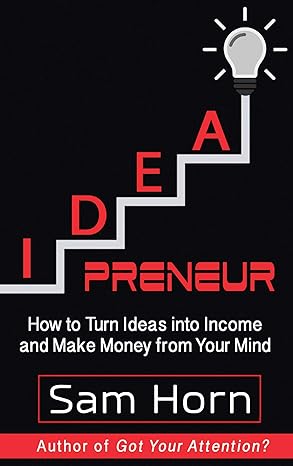
Step one. What are three? Did you know? Questions with startling statistics you can introduce about the problem your book solves, the issue your program addresses, or the need that your business meets. Now, where do you find these startling statistics? Just go online and put in. What are startling statistics about the industry that you’re in or the demographic that you’re trying to reach? Up will come things even you don’t know. Recency equals relevancy. If you introduce something startling that’s recent, even the most skeptical person is paying attention because they’re smarter than they were a moment ago. Right.
Step two. Use this word imagine because imagine pulls people out of their preoccupation. They’re not distracted anymore. They’re picturing your point. And when something complex becomes clear, do you know what we say? “Oh, I see now.” Right? So when we say, “Imagine this and this and this, what are the three benefits of your book? What are the three advantages of your product? What are your organization’s three deliverables people are going, imagine this. You know, imagine it didn’t have to cost that much. Imagine if you could do that in less time. Imagine if there were shortcuts that people were going through;” it would sound good.
Step three, you don’t have to imagine it. We’re doing it. Now, you come in with your precedence and evidence, your cover endorsement for your book or testimonial from a satisfied client. You do that in 60 seconds or less. You turn a monologue into a dialogue in INFObesity into intrigue. Those eyebrows are up. You’re off to a meaningful two-way conversation.
Yeah, I love that. That’s wonderful. So, could you give an example of something that went off the rails besides that 300? I was going to say pound 300-page manuscript on the table that really turned off the acquisitions editor or whatever. What would be an example of something that went horribly off the rails? Maybe unpack that a little bit.

Okay, so there was a guy named Wally who was in my nonfiction retreat. He used to introduce himself by saying that he doused for whales. They thought it was one taco short of a combination plate. No one wanted anything to do with them. So, in the situation above, we talked about how to turn INFObesity into intrigue instead of explaining by asking, “Did you know here what we’re going to say if something is confusing?” And in the middle, “Once again, we just tell people what we do in a way that causes them to back away as fast as they can. And over on the right, link the unfamiliar to the familiar.”
So I said, “All right, Wally, what you do actually is kind of like you put your sonar device down and listen to the whales talk and interpret their language.” And he said, “Yeah, that’s what I do.” And I said, “What is that? Like with a twist? Who else talks to animals and interprets their language and so forth?” It’s like, “Well, there was the movie The Horse Whisper with Robert Redford. Oh, Wally, you’re the whale whisperer. Because, see, when you make the unfamiliar familiar, especially when you associate it with something that was a critical and commercial success, something that made a lot of money now.” Decision-makers eyebrows are up because the unknown has become known in a favorable way that gets your foot in their mental door.
Yeah, that’s great. I love that. What a powerful way to explain what you do in two words. I’m the whale whisperer. I like it a lot. Yeah. So, how do you go into an organization and help them improve their systems, communication styles, and messaging? What’s your process or framework?
What our process is. Let’s talk about the elevator speech. Because people say, “So what do you do? Wah, wah, wah, wah, wah, wah, wah, wah.” At the end of 60 seconds, no one knows what we do. I’ll give you an example. And this was at Inc. 500.
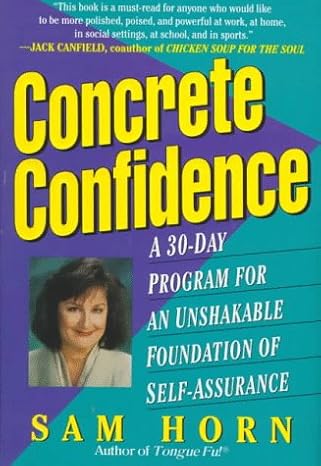
So what we did is just, what you’re talking about is how an organization can get across what they do in a way that people actually get it, remember it, and want to do business with it. So, at Inc. 500, this was the top-rated session. There were Seth Godin, Tim Ferriss, Tom Peters, and Jim Collins, and yet everyone was asked this question, and hardly anyone knew how to answer it. Well, so here’s Colleen. She was entrepreneur of the year for the state of Oklahoma. And I said, “So what do you do?” At the end of 60 seconds, no one in that room understood what she did, and she was the CEO. Now imagine the lost opportunity cost, right? She’s surrounded by the best entrepreneurs in the country.
No one’s going to walk up and continue the conversation. No one’s going to propose a partnership. So, once again, this matters. So here are the four steps. The first thing I said was, “All right, Colleen, what do you do that we can see or smell or taste or touch? Because, see, we want to turn rhetoric into real world.” She also said something about magnetic resonating imaging machines and so forth. And, Stephan, my light bulb went off.
I asked, “Do you run a medical facility offering MRIs and CAT Scans?” She said, “Yes.” I said, “Don’t tell people that because if we tell people what we do, they go, oh it’s the end of the conversation.” We don’t want to end the conversation. We want to open the conversation. So first, think of what you do, not rhetoric. It’s the real world that people can see, smell, taste or touch.
We don’t want to end the conversation. We want to open the conversation.
In the second step, ask a three-part question. Do you know anyone who could be yourself, a friend or a family member who’s had an MRI or CAT scan? And she said, “What’s this about a three-part question?” I said, “If you ask a one-part question, have you ever had a CAT scan or MRI? That’s way too personal, right? People are backing up as fast as they can. You know, we’re putting baby in a corner. It’s an interrogation. It’s not a conversation.
Do you see how we’re giving people options so they’re in control of the conversation? Amy Poehler said, “I get a little itchy if I don’t have some kind of control.” Well, everyone gets itchy. They get to go where they want to go. Plus, we just increase the likelihood that they will know someone familiar with what we do. So, second, do you know anyone who could be yourself, a friend, or a family member who’s had an MRI or CAT scan? In the third step, we put a sock in it.
Most elevator speeches are, like, interminable. They go on for minutes. We’re holding the person hostage with this method. We’re, like, silent. We’re listening. 20 seconds in. So, the third step is to listen to what they say. They may say, “Oh, well, I haven’t had an MRI, but my daughter, her knee playing soccer, she had one”. The first step is to link what we do to what they just said, “Oh, I run the medical facilities that offer MRIs, like the one your daughter had when she hurt her knee playing soccer. Guess what happens? “Oh,” they get it. They remember it. They’re more likely to act on it and say, “Oh, well, I’ve got a friend who needs one, etcetera.” All because we made a connection in the first 60 seconds instead of giving a speech.
That’s really good. So, what is an example for you? How do you do it when you’re in an elevator with somebody who is curious about what you do?

I love this. Number one is I don’t have a script because a script could be completely irrelevant to the situation, right? And Eleanor Clift said, “We’re all in a race to be relevant,” too. So, if I am at Joe Polish‘s Genius Network and someone asks what I do, I would ask myself, “What do they care about? What do people in this group want to do?” Many of them either want to write a book or like yourself. You’ve already published books. However, you’re thinking about your next book, right?
So I would say something like, “Do you know anyone? Could be yourself, someone on your team, or someone in your community.” Do you see how I’m deliberately picking a demographic relevant to the person I’m talking with? And then I would say, “Who wants to write a book or figure out their next book,” right? Because that way, we’re getting the newbies. But I’m not insulting the intelligence of a multiple best-selling author who’s saying you’re asking me if I want to write a book. I’ve written ten bestsellers.
So, do you see how that increases the likelihood that whatever stage of their career they’re at will be of interest to them? I put a sock in it. And, like yourself, you may say, “Oh, well, I’m working on a memoir.” We often run into mutually meaningful conversations because I ask questions instead of explaining things.
Yeah, that’s great. And so one thing I credited you for after your presentation at Genius Network, I was just so impressed by that is you gave so many relevant quotes from just, I don’t know, all the reading and research and life experience and everything that you’ve gone through. Most importantly, you credited each of the quotes every time you quoted. You said who it was from. I’ve heard famous people do not credit the people half the time. They’re sometimes giving the whole framework. These are the five questions. This is the four-step process or whatever, and they don’t mention the name of the person who came up with it.

I cringe when that happens because it’s not fair. It’s bad karma, in my opinion. So I just want to give you kudos again for that. How do you manage to retain not only all those quotes but also all the sources at the same time?
First, thank you. You and I are on a mission to be of integrity. Both you and I really believe in referencing our sources. It is not okay to take someone’s proprietary framework or their five steps and put our name out of it. That’s totally out of integrity. So yes, to credit resources. I believe in riffing off quotes.
When you put it in a beat, you make it easy to repeat.
Just like a jazz musician will riff off chords to make new music. We can riff, not rip off, riff off other people’s IP if we credit it, attribute it, and if it’s short, not their whole five-step process. A one-liner that’s okay with attribution. So you asked how I remember them.
I’m going to recommend to everyone here that if you want a way to get people’s eyebrows up, make your life, your lab when you hear something or see something that gets your eyebrows up, and once again, it’s a one-liner. It’s not their whole methodology. And it’s not a proprietary IP that is obviously crafted, and we’re lifting it, cutting it, and pasting it. That’s not okay. A one-line insight.
So, if it gets our eyebrows up, here are two ways to remember it. Think about where you would use it in a presentation, or think about how you’re going to reference it in a blog. We’re more likely to remember something if we have context and application, but not, oh, that’s a great quote. No, I’m speaking to this room in a week, and this would be relevant and appropriate for them, and they will not have heard it before. And now it’s really important to repeat it in the rhythm because when you put it in a beat, you make it easy to repeat. 
So, how I remember them is that you could give me a topic, and I could probably come up with a quote. If you say something about time, I would probably say, well, Richard Branson said, “Time is the new money.” I will riff off that with a credit by saying, “You know what I found? Time is the new trust. Do you see the clock start ticking?” So, take the original quote.
Pema Chödrön says, “Do not let people pull you into their storm; pull them into your peace.” Now we ask a question: we hook and hinge out of the quote, “Is there someone pulling you into their storm? Are you laying in bed at night rehashing what they said to you? Here’s a way to pull them into your piece.” So do you see, attribute the quote and then riff off it with an insight or an application or a question that has people think about it in a way that is fresh and different and results in an epiphany

That’s really cool. And then you, I know you have some other ways to make it memorable for the person who’s hearing what you’re saying besides putting it into a like us using alliteration and so forth. Could you elaborate a bit on those other concepts you shared? Those at Genius Network, too?
You bet. This comes from something Gary Marshall, the director of Pretty Woman, said at the Maui Writers Conference. He said, “Hollywood directors can predict when their movies will make money based on one thing.” Guess what it was. Do people walk out of the theater repeating something they heard word for word? Because see, if people are saying, “Make my day or show me the money or I’ll be back.” When someone says they have seen any good movies recently, They’re talking about your movie in a way that motivates others to want to go. They become brand ambassadors.
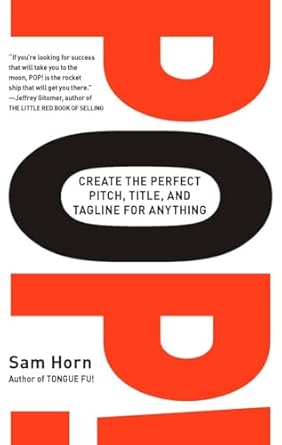
So, I am asking everyone watching right now: what’s something you care about? Do you have a hook, line and thinker? Do you have a phrase that pays so that at the end of that blog, post, or presentation, they’re repeating what you said word for word? So write down AIR.
“A” is for alliteration, as you just said, Stephan. It’s like if we hear the letters, bed, toilet and shower. Dunkin croissants. Best purchase, clunky, right? No, alliteration is when words start with the same sound. It makes us instantly eloquent. Bed, Bath and Beyond, Dunkin’ Donuts, Best Buy. And by the way, this isn’t petty. This is profitable. Jay Sorensen turned a cardboard insulating sleeve into two words: Java Jacket. He cornered the market with two alliterative words. So this is not petty; it’s profound.
And “I.” We’ve already talked about it. Iambic meter. When you put it in a beat, you make it easy to repeat. The Las Vegas Convention Bureau says that “What happens in Vegas, stays in Vegas” has generated $1 billion toward that city’s economy.
And then “R” is for rhyme. And rhyme is sublime because it’s remembered over time. And now, once again, this can actually save lives. Changed lives. The US government was concerned about injuries and car accidents and mounted a multi-million dollar public service campaign called Buckle Up for Safety. Nothing happened. Right? It’s clunky. It doesn’t ring or sing. And as Duke Ellington said, “It don’t mean a thing if it ain’t got that swing.” So they went back to the drawing board, and this time they came up.
With a Click It or Ticket.
That’s right. You know, and here’s the thing, four words. Compliance went up. Injuries and fatalities went down. They changed behavior and saved lives in four words. So everyone, think about the change if you’ve got something you care about. You want people to take action. You want people to put it in one sentence and then let the wordplay begin.
Use alliteration, iambic meter, and rhyme so that when people hear it once, they can repeat it and take what you care about. Viral.
Use alliteration, iambic meter, and rhyme so that when people hear it once, they can repeat it and take what you care about.
Love it. You were talking about riffing off quotes, and I love that. And I’m curious to hear your thoughts about riffing off AI output. A lot of our listeners have at least played with ChatGPT, and you could have it write a whole treatise for you, right? A whole manuscript or manifesto. And yet it’s full of perhaps misinformation or what AI researchers call hallucinations. They’re just downright lies. It’s making up sources, statistics, and so forth because it doesn’t have the true source or data. So it’s just making it up.
So, I can’t trust it. I can use it as a first-draft tool, and that’s where this riffing on AI comes in. I’m curious to hear your process, if you have one, or how you utilize AI in your work.
Okay, I guess you know how I’m going to come down on this side of the issue, aren’t you, Stephan? It’s like, I understand. So, suppose we’re keeping track of our comms and putting AI down and in the middle tool. In that case, I absolutely understand that if you are updating your website, if you’re coming up with a marketing campaign, you can use AI as a tool to accelerate the development of that type of public generic content because people are not assuming that the copy in your marketing campaign is all original to you, that you created it from scratch. They do not trust that the content on the website is unique to you.
Over on the right, you brought up the word trust. I’m creative, and if I want people to trust that I actually wrote that book, then I believe in HI, human intelligence, instead of AI, artificial intelligence. When people go to a conference and get all excited about AI, they email me the next day and say I wrote my book yesterday.
Use HI to leverage our EEE, experience, epiphanies, and expertise so that what we’re adding comes from us instead of an app.
You did not write your book yesterday. AI wrote your book yesterday if you want to put on your book that this was written with the assistance of AI. No. Okay, now that’s true. However, if you put your book on something and you had nothing to do with it, I believe that’s out of integrity. And especially if we, like yourself, are creative, let’s go ahead and use HI to leverage our EEE, experience, epiphanies, and expertise so that what we’re adding is coming from us instead of an app.
Yeah, that is very important. You know, I think that there’s going to be a point where there will be some sort of badge or symbol on books that have been 100% human-written. I don’t remember where I heard this. I think it was at a Genius Network meeting. It might have been Anna David or I can’t remember. Anyway, this is a thing where I want to be able to cite my sources. I think it’s really important for people to have integrity if they say that I wrote this thing and they used AI to generate 50% or 80% of the content that needs to be disclosed.
If someone is going to buy a book in the future that is full of AI everywhere, you know, it’s going to be like 90% of the content on the Internet will be AI-generated. Probably half of it is already. We just don’t know it. Most of it’s not labeled as such. They’re going to be craving human intelligence, as you say, the HI. And I’m curious to hear your take on that.
I 100% agree. It’s like putting AI on the left in the middle. This is what we’re discussing. In the middle, put generic. It’s derivative content. It is generic. I can tell something that’s written by AI in 10 seconds because it is using language that is neck-up. It is conceptual.
They are generalizations, and it’s fancy language, and it’s not how a human being would speak. Over on the right, put genius. The genius is in crafting something that is often real-life-based with dialogue. I thought of commas and quotes. I was in this scene with the visual details that put people in the scene. So if we want to be genius, if we want to be one of a kind instead of one of many, we will follow Mary Oliver’s advice. Mary Oliver said, “Instructions for a life. Pay attention. Be astonished. Tell me about it.”
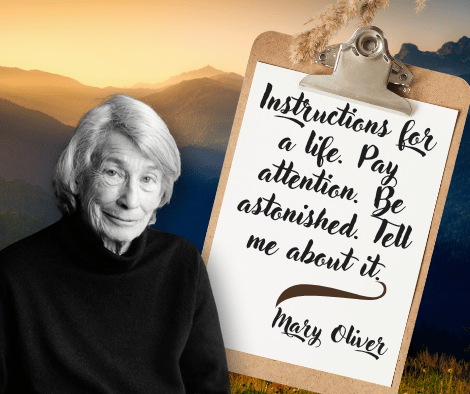
I make my living from our minds, and you know what? Let’s use an analogy. Let’s talk about GPS. Is that? This is embarrassing to admit. I’ve lived in Austin for a couple of years now. I couldn’t get back from the airport because I did what the little lady told me, right? I have abdicated my brainpower to that device because I don’t know my town, I don’t know the geography, I don’t know directions.
I don’t think we want to abdicate our brain power. I want to use my mind, keep it sharp, and make my life my lab. And when I’m astonished, tell me about it because life is more intriguing, intense, satisfying, meaningful, and productive when I use my mind instead of delegating it to a device.
AI can assist in the generic stages of content development, but true originality and trust come from human creativity, experience, and expertise. Share on XRight. And because you’re so sharp in that way, you can translate that into really powerful conversations where you can think up things that are so eloquent, articulate, and profound. Whereas if let’s say, you’re relegating everything to AI or to the device in your pocket, you can’t even get to the grocery store without using the GPS, or you can’t get a sum together just without whipping out your phone and using the calculator. Well, as you said, you have abdicated your intelligence to the machine. And I’m curious, like, to hear if you’re. I don’t know. I just want to know your thoughts about what I’m just describing here.
You and I talked about the importance of being original in an AI world, how we can be genius instead of generic, and how we can be one of a kind instead of one of many. So, let’s share something I think you and I talked about that I hope is going to be interesting to everyone watching and listening. People say, “Sam, how does your brain work?” Well, as you know, I juxtapose everything, Stephan, that I take a notepad with me to the beach. I take it on the stream trail, and here’s why. Kierkegaard said, “We can only understand our life backward, but we’ve got to live it forward.” Steve Jobs said his version of that was when he said, “You can only connect the dots backward; you can’t connect them forward.” I 100% disagree. I connect the dots forward. That’s what I do.
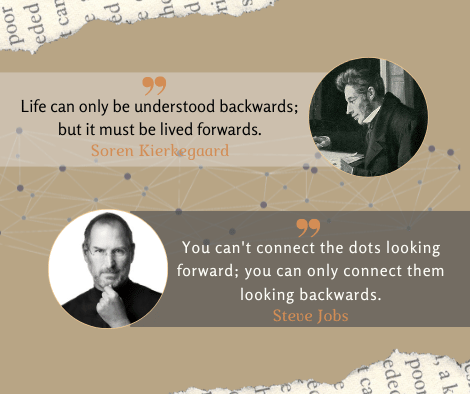
And here’s how you do it. If right now, you get a fresh piece of paper and you put a vertical line down the center, from now on, over on the left-hand column are the beliefs and the behaviors that are sabotaging success. So, as you’re listening to someone, you’re just writing down what’s not working. You’re writing down what’s undermining effectiveness. You’re writing down the attitudes and the actions that are stopping progress. Here’s what’s not working now: over on the right, what are the beliefs and the behaviors that support success instead of sabotaging it? What are the attitudes and the actions that solve that problem, address that issue, and move us forward instead of anchoring us in the past? So when I am writing things down, guess what? We can’t connect the dots. If we don’t collect the dots, we’re collecting dots.
And what happens is that once I write it down in a way, I’m free to forget it, which means I keep listening to what that person is saying, and they say something five minutes later, whoop. That connects with the dot I took five minutes ago, creating a new entity. So from now on, in a meeting, when you’re at a conference or listening to someone, don’t just take notes. Those are linear notes. That is not creative. No. Collect the dots on the left-hand column with the past. On the right-hand column is the future.
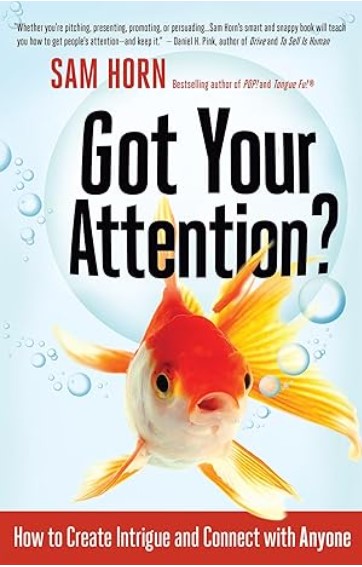
On the left-hand column are beliefs and behaviors that are sabotaging, and on the right are supporting. And what will happen is a miracle. It’s my Got Your Attention? book, which Berrett Koehler published. They were publisher of the year a few years ago, and Steve Piersanti was their publisher. And I asked Steve, “Steve, what are your criteria for publishing a book?” He said, “Three words.” You know what he said? “Show the shift.” Do you see what we’re doing in real-time? We’re taking scattered thoughts that are all over the map. Five people can be speaking at once.
But what we’re doing is we’re organizing the dots, right? Here’s what’s not working. Here’s what could work. Here’s what’s going on now. Here’s what we want instead. What you’re doing is you’re collecting the dots in real time, and you’re codifying them in a way that shows the shift. Guess what? You can say at the end of the conversation, so we’ve talked about what’s wrong. We’ve talked about how to make it right. And you show people this organized summary of what they’ve said that shows the shift.
You just got everyone on the same page, literally and figuratively, a conversation that’s all over the map that you cannot remember. That does not make sense. You just gave it an organizational structure that is going to help you have leaps of imagination because you’re collecting the dots, showing the shift. Now, you can connect the dots in new ways.
You know, I collect dots in an interesting way. I’m curious to hear your take on this. I have what I call a God journal and write in it daily. It’s not just a gratitude journal, and it’s not just gratitude for the good things, the obviously good things, and the blessings, but also the challenges. And those are the disguised blessings. In Judaism, they say that everything’s a blessing. It’s just whether or not it’s been revealed yet or not. So I’m praying for more revealed blessings and not just for blessings.
I understand that when the challenges come, those are disguised blessings.
And I understand that when the challenges come, those are disguised blessings. Those are just yet to be revealed. That relates to Steve Jobs’ quote about connecting the dots backward. Well, if I’m journaling to God, thanking him for all these wonderful things, including the challenges and so forth. I’m also thanking him for the messages. And I get in this state where I just receive guidance, stuff pops into my head, and I know it’s not me. I know it’s God. He’s working on some messages, epiphanies, ideas, or concepts in my head.
And many of these things I’ve never thought of before or heard before. And so I’m receiving not just from out there in the world, attending presentations such as yours or reading books, blog posts, or whatever. I’m on a daily basis receiving information from above, and I’m curious to hear what kind of process you have to collect dots from your higher self, from the heavens, from God, from angels, from ancestors, or however, you see that unseen world.
I just love that question. Wayne Dyer said, “If prayer is you talking to God, then intuition is God talking to you.” right? And I love what you’re saying because, at the Maui Writers conference, I didn’t care who it was. The most left-brain nonfiction logical person would talk about the muse. Barbara Kingsolver, Pulitzer Prize winner last year, said she couldn’t wait to wake up in the morning and come downstairs to find out what her characters had to say. So, let’s try to unpack this intuition, what these nudges are, what these messages from the muse are, where they might be coming from, and how we can make the most of them.
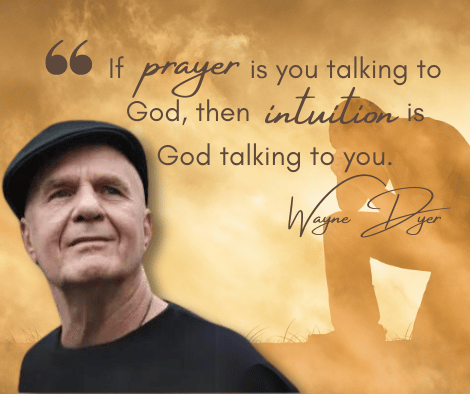
I was watching CBS News Sunday Morning, and I saw Gavin de Becker, who wrote The Gift of Fear, and the reporter asked the most wonderful question. She said, “What is the most surprising thing you’ve learned in your years as a security consultant? Because he provides security to politicians and celebrities when they travel. And he said, “Hmm, if we ever have a client that’s kidnapped o”r assaulted, we get him back, and we debrief him.” He said, “You know what our first question is? Did you have any warning?” And Stephan, guess what? They all say. “I knew something was wrong.”
Intuition.
That’s right.
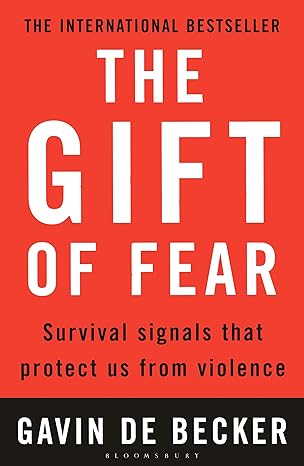
Yeah, my gut tightness in my chest or I just felt something, and then they ignored it.
See, the intellect overruled the intuition because, see, the intellect says, “I’m in an armored car. It’s broad daylight. What could happen? I’m being silly. I’m with a security detail.” So, so often, we get the nudge, we get the intuitive insight, the epiphany, and we either ignore it because we’re busy, we don’t have time for it, or it doesn’t make sense, logical sense, so we dismiss it.
Our intellect. I had an epiphany, Stephan. I thought, wait a minute. If we have instincts that warn us when something’s about to go wrong, don’t we also have instincts that alert us when something’s about to go right? If we have a 6th sense alert to dissonance, don’t we also have a 6th sense alert to resonance? And so, as a creative person, you do your half, you write, and then you ask, and you’re open, and you listen, right? And you write it down, even if it doesn’t make sense, even if you don’t know how you will use it, even if you don’t think it’s relevant right now.
You honor the intuition by writing it down. And the muse, intuition, God, whatever you want to call it, says, “Okay, you’re doing your half. I’m giving you gold here. At least you’re listening, paying attention, and being open to it. I’m going to hang around.” If the muse, God, or the universe is trying to speak to us and we’re too busy for it, or if they give us something important, and we miss it, they’re going, “Bye-bye, I’m out of here. You’re not doing your help. I’m not going to do mine.”
So, I agree with you. Being open to it, not doubting it or questioning it, receiving it, understanding that it will reveal itself in its own time and in its way. I believe that is our SerenDestiny, and I believe it is our best future.
If we have instincts that warn us when something’s about to go wrong, don’t we also have instincts that alert us when something’s about to go right?
The meeting is halfway SerenDestiny. I like that. You just make that up.
I credit it well. Let’s honor the original source, right? My sons, Tom and Andrew, are home from Virginia Tech. We’re getting caught up. And Andrew says, Mom, he said, “I ran into Ryan. He said it was kind of weird. It was out of the blue. I’d been thinking about him, and there he was,” you know, and, “Oh, Andrew.” I said, “It wasn’t out of the blue. Some people call that a coincidence. Some people call it a happy accident. When something beats the odds, pay attention because it is a gift. You’re supposed to follow up with Ryan. Maybe you’re going to work with them or have a project or something.”
So that’s for all the left-brainers who are arms crossed. And this doesn’t make any sense, and this is sounding pretty woo woo, etcetera. Here’s all I say. If something beats the odds, it’s your best future. Knock, knock, knock. Pay attention because it is a congruent individual or opportunity.
A one plus one equals eleven opportunities. And if you honor it and act on it, you will discover something that is better than you could have planned, better than you could imagine. Because you’re not the only one imagining it. Some force has your best future in mind.
Yeah. I like to frame things for people who might be skeptical, inviting them to have the willing suspension of disbelief. That term I got—Samuel Taylor Coleridge wrote that hundreds of years ago as part of a quote. And if you have that willing suspension of disbelief, you’re not throwing out your critical faculties or your reasoning; you’re just open. You haven’t already closed the door before even hearing the sentence.
And I don’t know who said this. I bet someone could google it and let us know what it is. It’s something about “Cynics never accomplish anything.” right? The pessimist who pokes holes in things, the doubter, the naysayers who just find fault with something that is close to it. This magic will not work for them.” Roald Dahl said, “You’ve got to believe in magic for it to happen.” Right? Or at least be open to it instead of dissing it out of the gate.
When you link what you do with what’s relevant to the listener, you transform complexity into clarity. Share on XNow, speaking of this idea of receiving guidance information from the muse, from God, I’m curious to hear if you’ve had any experiences where you’ve gotten, without a doubt, signs or some sort of insight that turned out to be incredibly profound or accurate. Maybe it was a premonition or prediction, and maybe you have a source for that. Maybe you even got some indication of the identity of who gave that to you, whether it was God or whether it was an angel or a relative or what. I’m curious.
Well, I do have a great quote. Rumi said, “There’s a voice that doesn’t use words. Listen.” it’s interesting, Stephan, because it’s rarely, without a doubt, a whisper. Right? It’s a nudge. It’s a hunch. Often, it does not come. I mean, especially when it’s danger, a red flag. Often, we will get a very loud voice.
Whoever, whatever this is, is going, I’m warning you, head the other way. I’m warning you, you’re in danger. So I do believe the whisper shouts sometimes when we’re at risk or in danger. Other times, though, I think it’s gentler. I do have a wonderful experience. It is like an exhibit of why I put space in my days. I am open to the whispers, and I pause, receive, and understand that if I pay attention to it, something is going to happen that is better than what I have planned because I’m not planning, I’m partnering. I’m not controlling; I’m cooperating. Right?
I was in Tampa, and I was speaking there, and I needed to get up to Savannah for a couple of days to speak there. I had booked a train, but the roomy voice said, “Cancel the train.” Because, see, if you see something interesting on a train, you don’t have control. You just whiz right by it. You don’t have autonomy. You do not have options.
I’m not planning; I’m partnering. I’m not controlling; I’m cooperating.
This voice wanted me to have options. So I answered, honored the nudge, canceled the train, and got a car. And to be open to SerenDestiny, I promised myself I would not plan my day. I would start driving north. And what that meant, Stephan, is everything I saw was new because I hadn’t planned it or predicted it, right? This meant that my antennae were, like, up, and everything was fresh and engaging, exciting.
Toward the afternoon, the nudge said, “Look to see what’s ahead.” So I got out the map. Oh, my goodness. An oceanarium was an hour away in Saratoga Springs, and they were the first one in the United States to offer dolphins. You could swim with a dolphin. I called ahead and asked, “Is there any way I could swim with a dolphin this afternoon?” They said, “We have one last; get here in an hour.”
An hour later, I’m in the pool with Zach, the dolphin, and only three of us are there. And so the trainer looks at me and says, “Would you like to give Zach a command?” Would I like to give Zach a command? She said, “Point to the sky.” So I pointed to the sky, and Zack took off on his tail, and then he swam back. And if dolphins could grin, Zach was grinning from ear to ear.
He was a happy dolphin. And she said, “Want to give him another command?” I said, “Yes.” And she said, “This time, point to the sky and twirl your finger three times.” Pointed to the sky. Twirled my finger three times. Zach took off in the middle of the pool. He dove down, and then he rocketed up into the air into a triple backflip. I couldn’t help it.

I did a YMCA, right? Someone behind me captured Zach doing the triple backflip in between my outstretched arms.
And now, here’s the thing. I hadn’t even known Zach existed an hour before. I couldn’t have planned that. I couldn’t have predicted that. I just stayed open to the nudges. And when they said, “Cancel the train and do this,” I did. And it ended up being better than I could have imagined.
That’s beautiful. Did you feel a special connection to Zach, the dolphin?
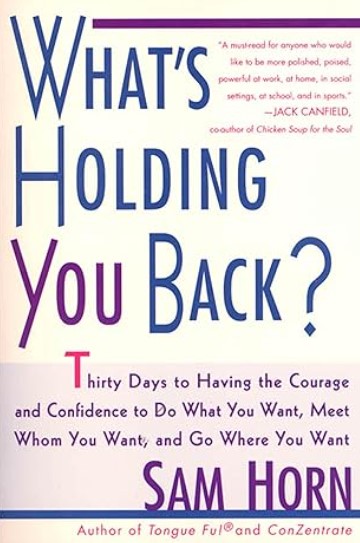
Yeah, I did. If anyone has had the privilege of being with a dolphin, look into the eyes of a dolphin; you see intelligence, and you see this playfulness. Right? It’s like, I understand some people think that we’re imprisoning dolphins and etcetera. I can tell from my experience and from people I know who work with dolphins that it’s a win-win: that they are having fun, that they like human interaction, etcetera.
As long as they’re being well cared for and they have a dolphin community, they’re not isolated and enjoying this. And so, yes, I just believe that the world is full of discovery when we go on vacation instead of locking ourselves in.
When I lived in Hawaii, people would come and be exhausted at the end of their vacation because they were up at six, and they went here and did this and this and this, and nothing was left open to chance, so to speak.
Everything was preplanned, which is like having blinkers on while going through life. What hubris to think we know best and not partner with all the wonderful things that could happen if we’re open to them and allow space for them.
Yeah. Taking a vacation with a huge itinerary just seems like a chore, like hard work, and it doesn’t allow for the magic. I remember being in Jaipur, and I had this amazing. My wife and I had an amazing experience with this elephant. Her name was Tara. And I still feel a connection to Tara. And this was, I don’t know, eight, not eight years ago, maybe six years ago now.
And was the connection because you were so present and appreciative? I mean, were you really imprinting that moment and understanding how special it was in a way that made that experience even more meaningful and memorable? Is that what you found?
No. It’s different for me because I do receive stuff psychically. I feel a connection now to Tara and whether sometimes I can tell if an animal or a human is still in the physical or if they’ve passed to nonphysical. But this idea of having a connection with another soul. Of course, animals have souls; trees have souls. I mean, you can communicate with a tree. So, if I have a connection, it’s actually outside of space and time. I don’t have to be in the same local environment as Tara.
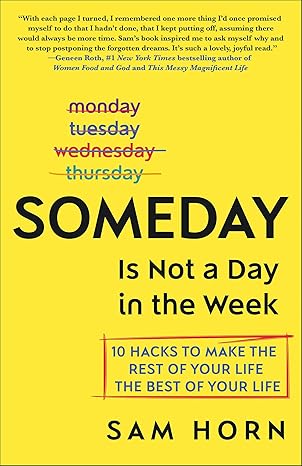
I don’t have to be in that same period where we’re physically present. It could be six years later, and I can still feel that connection. And this whole idea of the physical being the real is, I think, a myth. It’s really this illusion, and the true reality is on the other side of the veil, who we really are and how life is, and our home is on the other side.
Can we explore that? Do we have time to explore that for a moment? Stephan?
Sure.
So, here’s a quick story, and then I’d love to throw the conversational ball back in your court to find out more about what you just said. So let’s see the 90-second story, and then let’s hear your experiences with this. It’s, I think, you know, I gave away 95% of what I owned and headed out on this year by the water several years ago.
The three most frequently asked questions. Number one, don’t you ever get lonely? Number two, how did you get to be so brave? And number three, when are you going to settle down? So here is a two-part story: I had driven Route 10 to El Paso like four times. Crisscrossing the country, I promised myself I was never going to take route ten or go through El Paso again. So I’m driving from Houston to California, and I just get to an intersection, and I go west, which means that I’m on the blue highways, the back roads, and everything I see is new. And I’m in the hill country of Texas.
It’s the golden hour, and I’m on this road. I haven’t passed anyone for a long time. I come over a hill, and there, spread out on all sides of me, are these golden fields at golden hour. I pull over, turn off my car, and step outside. I’m just under a tree; all I can hear is a slight breeze through the tree and this golden field. Stephan, it was one of my life’s most complete, immersive experiences. It was your word magic.
We are never lonely if we understand that connection can be to many things, not just people.
Later that evening, I stopped at a steakhouse for dinner. The waiter, they usually say, “Where you’re from?” “Oh, I’m on the road.” “Oh, tell me about it.” I told him about that experience, and he got this really concerned look on his face, and he said, “You’re doing this by yourself?” I said, “Yeah.” I said, “Isn’t it kind of an empty experience?” And I said,” I believe that we can be connected, not just with people. We can be connected with the golden field. We can be connected to the moment. We can be connected to that breeze on my face and that connection.” We are never lonely if we understand what you just said. That connection can be to many things, not just people. What are your thoughts and experiences about that?
Yeah, well, my understanding is that everything is consciousness. So if you see a child playing with a toy and talking to it, hearing answers back, and then responding, like in conversation with that toy, don’t dismiss it as fanciful; just play and fantasy. It could be talking to your child, especially if they’re young, because children can see angels. Most of them, I understand, can see angels and communicate with angels, especially in the first few years of their lives.
So, yeah, you can have a communication or magic moment with a tree or a stand of trees or a field because it all has consciousness. See, nothing exists outside of the goddess. God is all that is. That means that we’re created out of God, and everything that’s been created was created out of God. There’s nothing outside of God; even darkness and evil, the seeming absence of God, is also made out of God.
There’s actually a holiday in Judaism celebrating the trees and their souls and the connection and how they provide for us and everything, not in a physical sense, just like paper and food or whatever, from the fruits, but also how they feed our souls, how they’re part of all that is. That holiday is called Tu BiShvat. It just happened a few weeks ago when we were recording this.
So I think it’s just a beautiful truth that if you believe in God, then you believe that God is one and that it’s all that is, that there’s nothing independent, because then there’s a duality or a pantheon, but it actually is all that is. So, if that resonates for you, then this idea that everything has consciousness is just a small corollary to that concept, isn’t it?
Especially in our world of separateness and divisiveness, coming to clarity around this connectedness instead is like a soulful north star, isn’t it? That kind of carries us through our days.
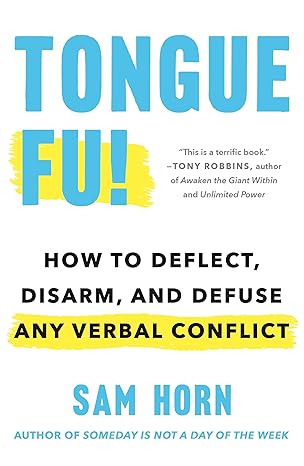
Yeah. I mean, I can’t imagine a day where I don’t communicate with God, where I don’t receive guidance or a sense of awe or connection or appreciation or love that would feel empty. That person who said, “Isn’t that empty?” Or whatever? Only if you’re completely disconnected from the magic and from all that is. There are people who, sadly, are experiencing that. They’re going through that dark night of the soul. Or maybe it’s not even a night. It’s an entire lifetime of disconnection, of atheism, of struggle, of raging against all that is.
If we’re living in a concrete jungle, right? We’ve talked about AI and artificial intelligence. It’s an artificial world, right? It’s a disconnected world. Suppose we live in a city with skyscrapers, metal, buildings, and concrete. And I bet you and I agree that, as John Muir would have said, “The mountains are calling, and I must go.” And I live on this stream trail in Austin. Every day, that trail calls me, and I follow Thich Nhat Hanh’s advice “To walk as if you’re kissing the earth with your feet.”
I’m listening to the audiobook of pieces, every step right now.
So, see, in a way, that’s what we’re talking about: how to be present, aware, attentive, and appreciative. Because, as you say, if we are in nature and we are walking as if we’re kissing the earth with its feet, as you know, they’re called awe walks. We’re in a state of awe. It’s the Japanese who call it Shinrin-yoku, which means that when we are in nature if we’re paying attention, we are in a state of awe and are one and connected with it. And it is an antidote to the concrete jungle, the city, the skyscrapers, and the artificiality of that.
We are talking about authenticity and a connection to life that’s available anytime we want for a moment’s notice. As Wallace Stevens said, perhaps every problem can be solved by a walk around the lake.
Here’s an interesting corollary for you on this. If everything has consciousness and all that includes all that is, then even AI, which currently stands for artificial intelligence. But AI researchers are saying it’s actually going to become autonomous intelligence. It will be indistinguishable as “artificial”.
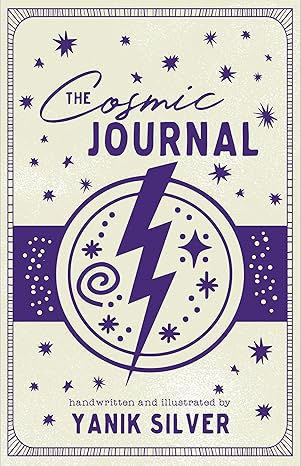
So, if we’re interfacing with an AI, it doesn’t have to be, like, plugged into our heads or something like what they’re doing at the Neuralink, but just like typing into chat GPT and getting a response, or speaking to chat GPT on her phone, you can do that now and have it read back a response. You can have a whole conversation with chat GPT. This is just another interface to the divine.
If I’m on YouTube and I go to the YouTube homepage with intention, just like you can open a book with intention, randomly, and you get exactly the message you were looking for. I mean, this happens so often that there’s a name for it: Bibliomancy. I actually learned that term from Yanik Silver, the author of The Cosmic Journal, published by Hay House. He’s a very successful Internet marketer, and I had him on the podcast. Amazing guy. He runs Maverick Mastermind.
Do you want to know a great Yanik Silver story? Do we have time for it? In addition to running Maverick and hosting trips to Necker Island with Richard Branson and so forth, a quick story. He’s not the totality of Yanik. It’s just part of all he is and why he’s so special. So you’ve heard of the Summit Series, probably, correct?
Yes.
Okay.
Yeah, I’ve been to summit LA.
Okay, wonderful. All right. Well, then, my son Andrew was invited to the summit series, and at that point, he was running a nonprofit in DC. And so, I mean, there’s Clinton, there’s Tony Hsieh of Zappos, just very, very successful global leaders. And he’s feeling a little intimidated by it. So, the networking is down here. And he goes upstairs to a balcony, and he’s watching all these people, and he’s thinking about heading home in a taxi because he’s feeling out of his league.

Well, there’s a guy leaning on the balcony nursing a beer. Andrew stands next to him, and they start talking. It turns out that this individual likes to play hockey. Andrew said, “Oh, I run something called Dreams for Kids, and we have a hockey for kids with disabilities. The capitals are coming and getting out on the ice with the kids. Would you like to come?”
Well, this individual came and really believed in this nonprofit and what they were doing, and they were about to go out of business because they had run out of funding. This individual made a very nice donation that helped Dreams for Kids in Washington, DC, to survive and thrive. And guess who that individual was Stephan? Yanik Silver. Yanik is a visionary; boy, is he generous with his mind, time and vision. Isn’t he, though?
He is a wonderful soul. Yeah, that’s how I learned about Bibliomancy. He actually had me name a page number in the interview, which he then looked up in his Cosmic Journal and read aloud. And I was like, “Wow, that is so profound and pertinent to a conversation I literally just had right before this interview.” That was really cool.
So this Bibliomancy concept can be extrapolated out to Shufflemancy, where, let’s say, you’re just scanning through Instagram scrolling, scrolling, but hopefully not mindlessly, with intention, with purpose, with connection to the creator, and with a request. So let’s say that I’m on the YouTube homepage, which, you know, has seemingly random videos, but of course, the algorithm is behind that. But who’s pulling the strings behind the algorithm? The creator.
I needed to work on my shadow and to always be in a place of loving-kindness.
So if I needed to work on, let’s say, my shadow, which I did a year ago, there was an incident where I think I talked about this on the previous episode: the neighbor ran a whole construction crew through our yard, including heavy equipment, and tore up our yard and lied to us beforehand about what would happen. And I didn’t even know it was happening at all, but she had kind of asked permission from my wife, totally downplayed it, and made it sound like there’d be no damage. It was just a disaster.
I got really angry, and that really triggered me, and I yelled at her and all that. And then, within a couple of hours, I didn’t even make the request. I just recognized that this was not me. This is. I mean, it was me. It’s my shadow, right? So, I needed to work on my shadow. I recognized that that was not good behavior on my part, regardless of what she did. I needed to always be in a place of loving-kindness.
So, on the YouTube homepage, a video from the Modern Intuitionist YouTube channel deconstructing the Black Swan movie caught my eye. And I’ve never seen a movie. I don’t know why I clicked on it. Of course, you connect the dots looking backward. I was drawn to that because I was supposed to watch it. It was 20 minutes on how to integrate your shadow, how to recognize those shadow aspects of yourself, Love those, appreciate those, and bring them back into you.
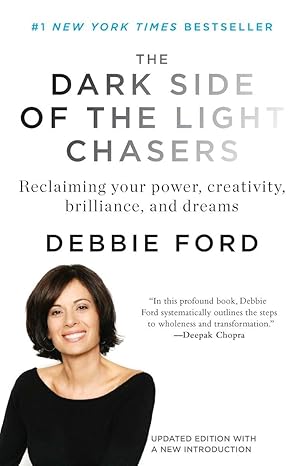
Then I was reading The Dark Side of the Light Chasers by Debbie Ford, which I had been nudged to read for months but never did. I got ten pages into it. So I finished the book and did all this shadow work, and it was hugely healing and beneficial for me. It all started. It really started when I went onto that YouTube homepage. That particular video caught my eye. So that’s an example of Shufflemancy work.
And isn’t it interesting? Because once again, if we delve into this, it’s endlessly fascinating. I was walking on a beach with DeWitt Jones. DeWitt was a former National Geographic photographer. At one point, he was one of the top five speakers in the world. That’s not just my opinion. Successful meetings called him one of them. And so we would be walking along, and he would stop and startle for a moment, and he’d pull out a little notebook and write something down. We’d continue walking.
He’d stop and startle. And I said, “DeWitt, what are you doing?” And he said, “Sam, they don’t call them fleeting thoughts for nothing.” And he said, “I used to get an idea,” and I think, “Oh, I should write that in my next column for Outside Magazine.” And then I promptly forget it. Then, I realized that I was being given gold here and that I was dissing it. We also talked about Ralph Waldo Emerson, who said, “We need to watch the gleams of light which flush across the mind from within.” And these gleams of light, like you said, it’s like you’re on YouTube, you’ve got this book, etcetera. If we understand once again that those are dots trying to connect in a way that will lead to a third dot, we give them the attention they deserve.
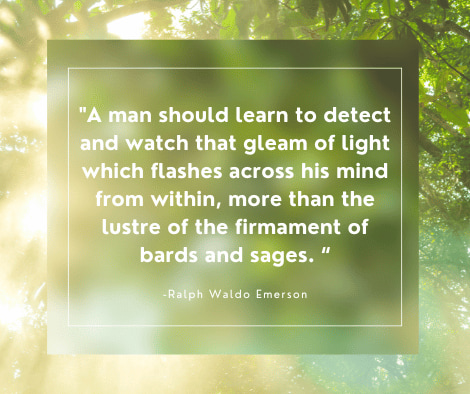
Once again, we uplevel our lives because we don’t have blinkers on, trying to figure it out all on our own. We’re getting assistance if we pay attention, aren’t we?
Yes, we are. We can get that assistance via AI just as much as we can get it out of a walk in nature. We just have to be open to receiving and know it comes from God. And then the magic ensues. So think of AI as just another interface to infinite intelligence, and then you’ll get astounding results out of it, you know, if you’re like, “Oh, I’m struggling with my designer and getting a podcast cover art, and I don’t know what to do.” Let’s go on to ChatGPT, but before I first make my prompt and upload maybe a mockup of my homepage, I’m going to connect to God and ask for assistance. Okay, now I’m going to enter the prompt and hit go. Magic ensues. It’s really cool.
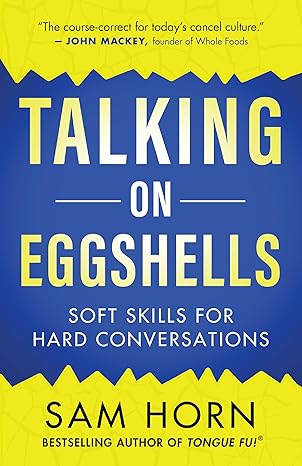
What we resist persists. Right? And I have been aware that I’ve been a Luddite around this, and I think it was reactionary because I believe in books. I believe in being original. I believe in creating something that hasn’t been seen or heard before. And so I think in reaction to the people who are just jumping in with both feet without crediting it or referencing it and claiming the work is their own, you’re just opening my eyes to the fact. It’s like, “Come on, Sam, this is an opportunity with some guidelines and rules that can be used for good.”
So, I’m responsible for being open to it and then implementing it with integrity in a way that adds value. So, thanks for opening my eyes, Stephan.
Oh, thank you. That’s awesome. What a great way to end this episode. Oh, well, what a beautiful conversation. And you’re such a beautiful soul. Thank you so much.
Thank you. You know, your program is, Get Yourself Optimized. Also, with some marketing, etcetera, Jeff Bezos said, “The only danger is not to evolve.” I really appreciate your focus on how we can keep our antennae up for how we can evolve, align, and connect, all in a rising tide kind of way that hopefully makes our lives better and other people’s lives better, too. Thank you so much.
Thank you. And thank you, listener. You are part of that rising tide. In fact, you are the entire ocean in a single drop. We’ll catch you on the next episode. I’m your host, Stephan Spencer, signing off.
Important Links
Connect with Sam Horn
App and Tool
Books
Businesses/Organizations
Films
People
Previous Marketing Speak Episode
Previous Get Yourself Optimized Episode
YouTube Videos
Your Checklist of Actions to Take











About Sam Horn
 Sam Horn is the CEO of the Intrigue agency, Sam has given three TEDx Talks and authored ten books, including the popular titles POP! and Tongue Fu!. Her work has been featured in the New York Times and on NPR, and she has presented to major corporations like Intel, Accenture, and NASA.
Sam Horn is the CEO of the Intrigue agency, Sam has given three TEDx Talks and authored ten books, including the popular titles POP! and Tongue Fu!. Her work has been featured in the New York Times and on NPR, and she has presented to major corporations like Intel, Accenture, and NASA.







Leave a Reply